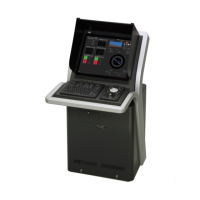10-1 Section 10 Failures and After-Sale Services
1
2
3
4
5
6
7
8
9
10
11
12
13
14
15
16
17
18
19
20
21
23
24
25
26
27
Section 10 Failures and After-Sale
Services
10.1 Failure Detection
Semiconductor circuits can be considered to be almost free from defective semiconductors and/or
performance deterioration except when there are design and inspection errors, or external and human
induced causes. Generally, the causes of comparably frequent failures include line disconnection due
to humidity of the high resistor, failure of the variable resistor as well as contact failures of switches and
relays.
In addition to faulty parts, faulty adjustments (especially faulty tuning) or faulty maintenance (especially
faulty cable contact) occasionally make up causes of failures; thus, it is effective to reinspect or
readjust these items.
10.1.1 About alerts
Failures can be detected from alerts.
For details on alerts, please refer to "Appendix B, Alert List."
10.1.2 Alert description
For a description of alerts to be displayed, please refer to "Appendix B, Alert List."
10.1.3 Fuse inspection
Because there is a specific cause for any fuse meltdown, it is necessary to check the related circuits
even if there is no abnormality after changing a fuse. However, please give consideration that the fuse
meltdown characteristics vary significantly. The following table shows a list of the fuses used in this
unit.
List of Fuses Used
Fuse Name Name of
Model Used
Placement
Location
Count Part Spec. Change Kit Model
Name
Blade fuse
(Auto fuse)
NBD-913 Power
supply unit
2 32VDC 15A part 1015(5ZFCK00008)
Blade (mini) fuse
(Auto fuse)
NQE-1143 JB 1 32VDC 15A part 1215(5ZFCK00017)
Blade (mini) fuse
(Auto fuse)
2 32VDC 3A part 1203(5ZFCK00016)
Glass fuse 4 250V 0.5A part MF51NR 250V
0.5(5ZFGD00019)

